Heart
Contemporary
American Poetry
About School
Maggie Anderson,
David Hassler, Editors
(University of Iowa Press)
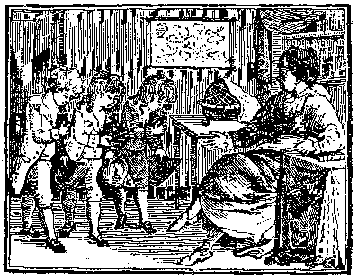
Six of them: great orange, great golden carp
Lined up at the railroad crossing, red stop fins fanning
Each waits, each listens, and crosses in turn
Headed for the lily shoals of children.
This collection isn't namby-pamby stuff: there are tales of school bullies, beating up on "faggots," back room sex, and "Catatonia: In a Classroom for the Slow to Learn," which begins:
Jason, look at this book, I say,
but feel like I'm in a dream he's having.
a ship at anchor off the island he is
that dispenses words like boats to his shore.
He knows better than to talk.
The text is divided into seven parts, including "O Where Are They Now?" "Sports and Clubs," "A History of Our People" and, under "Homeroom," an old favorite from the late Richard Brautigan:
Oh, Marcia,
I want your long blonde beauty
to be taught in high school,
so kids will learn that God
lives like music in the skin
and sounds like a sunshine harpsichord.
I want high school report cards
to look like this:
Playing with Gentle Glass Things
A
Computer Magic
A
Writing Letters to Those You Love
A
Finding out about Fish
A
Marcia's Long Blonde Beauty
A+!
Nuns turn up here and there, whacking hands with rulers, nuns who rustle drily inside their gowns; there are teachers who give us Large black letters/floating unanchored on the page. One girl student makes love with an one-armed pimply-faced kid in the back of a bus; there is the high school band Boom, boom,/To a field where it goes boom boom until eight forty-five... A teacher realizes "the number of students I have taught/is enough to populate a small town, which,"
I can see it nestled in a paper landscape,
chalk dust flurrying down in winter,
nights dark as a blackboard.
A suggestion: instead of paying annual homage to the famous and respectable lardheads of the East Coast Smart Set, why don't the Pulitzer people pay attention to their charter, and give a few prizes to the likes of Anderson and Hassler --- who show a marvellous ability to cull through thousands and thousands of poems and come up with such a funny, wry, sad, winsome, elegant selection. It's about school, they tell us --- but just like when we were eight or ten or thirteen school was so much our world, the world here is just that. Listen to Billy Collins, on "The History Teacher:"
Trying to protect his students' innocence
he told them the Ice Age was really just
the Chilly Age, a period of a million years
where everyone had to wear sweaters.
And the Stone Age became the Gravel Age,
named after the long driveways of the time.
The Spanish Inquisition was nothing more
than an outbreak of questions such as
"How far is it from here to Madrid?"
"What do you call the matador's hat?"
The War of the Roses took place in a garden,
and the Enola Gay dropped one tiny atom
on Japan.
The children would leave his classroom
for the playground to torment the weak
and the smart,
mussing up their hair and breaking their glasses,
while he gathered up his notes and walked home
past flower beds and white picket fences,
wondering if they would believe that soldiers
in the Boer War told long, rambling stories
designed to make the enemy nod off.
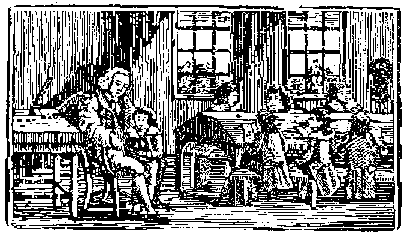
Wooden Churches is a labor of love: 120 photographs and a diverting text. Instead of launching into tedious descriptions, histories, commentary on design, location, and architecture --- Bragg interlards the photographs with a rich variety of quotes, from Albert Einstein to Carson McCullers, from Richard Wright to Walker Percy, from Mark Twain to Sherwood Anderson. And there are a grand variety of structures pictured: fall-down churches (in Mississippi), churches with history (at Bull Run), churches in large cities (Chicago), churches in small towns (Franklin, Louisiana); church-goers waiting to get in, waiting to get out, being baptized, going into ecstasy. And the quotes, the wonderful quotes. For example, this from Wright's Black Boy: In the black Protestant church I entered a new world: prim, brown, puritanical girls who taught in the public schools; black college students who tried to conceal their plantation origins; black boys and girls emerging self-consciously from adolescence; wobbly-bosomed black and yellow church matrons; black janitors and porters who sang proudly in the choir; subdued redcaps and carpenters who served as deacons; meek, blank-eyed black and yellow washerwomen who shouted and moaned and danced when hymns were sung; jovial, potbellied black bishops; skinny old maids who were constantly giving rallies to raise money; snobbery, clannishness, gossip, intrigue, petty class rivalry, and conspicuous displays of cheap clothing... The quotes, thank God, aren't all prim and puritanical, reflecting the joy even of boredom, like this from Clyde Edgerton: Little Zalph Loggins finally found a piece of gum under the pew that he could get his fingernail under. He popped it off, looked at it, and decided not to chew it. Then he wondered what kind it might be and decided to go ahead. He put it in his mouth to see if it was Juicy Fruit. It was Dentyne he believed, so he took it back out and tried to stick it back under the pew. It wouldn't hold. He put it in a hymnbook. And this final dry word from Mark Twain's Letters from Earth: Now then, in the earth these people cannot stand much church --- an hour and a quarter is the limit, and they draw the line at once a week. That is to say, Sunday. One day in seven; and even then they do not look forward to it with longing. And so --- consider what their heaven provides for them: "church" that lasts forever, and a Sabbath that has no end! They quickly weary of this brief hebdomadal Sabbath here, yet they long for that eternal one; they dream of it, they talk about it, they
Churches
A Celebration
Rick Bragg
(Algonquin Books of Chapel Hill)
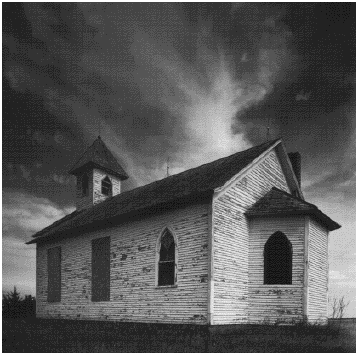 "It doesn't matter if you believe in the religion," says the author, in his introduction. "If you grow up in the country, in small towns or big ones, they stand on almost every corner, on every tenth-mile of pine barrens and pastureland, to remind you that there are people who do believe."
"It doesn't matter if you believe in the religion," says the author, in his introduction. "If you grow up in the country, in small towns or big ones, they stand on almost every corner, on every tenth-mile of pine barrens and pastureland, to remind you that there are people who do believe."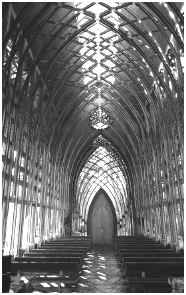 There are the fancy churches (Bella Vista, Arkansas), and the humble (Adams County, Nebraska), and the simple (Salem, Massachusetts); the big (Richmond, Virginia), the tiny (Madison County, Nebraska), and the abandoned (Webster County, Nebraska).
There are the fancy churches (Bella Vista, Arkansas), and the humble (Adams County, Nebraska), and the simple (Salem, Massachusetts); the big (Richmond, Virginia), the tiny (Madison County, Nebraska), and the abandoned (Webster County, Nebraska).
think they think they are going to enjoy it --- with all their simple hearts they think they think are going to be happy in it!
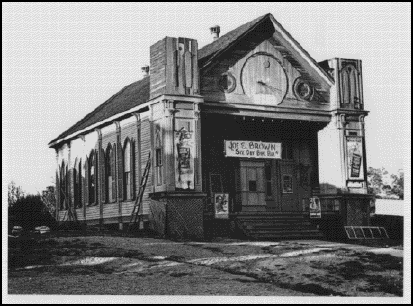
The Limpet
Martin Wells
(Perseus Books)
Species
On Cowbirds, Kudzu,
Hornworms, and
Other Scourges
Janet Lembke
(Lyons Press)
 Martin Wells is a Zoologist at Cambridge. In Civilization and the Limpet, he sets out to tell us about "fish and invertebrates, the worms and the squid, the jellyfish and small creatures that most people prefer to ignore." The reasons? "One is simply that I believe life is more interesting if you know what is going on around you...The second reason is that I think people ought to know something about the lives of the other inhabitants of this planet, for the good of all of us."
Martin Wells is a Zoologist at Cambridge. In Civilization and the Limpet, he sets out to tell us about "fish and invertebrates, the worms and the squid, the jellyfish and small creatures that most people prefer to ignore." The reasons? "One is simply that I believe life is more interesting if you know what is going on around you...The second reason is that I think people ought to know something about the lives of the other inhabitants of this planet, for the good of all of us."It makes it all very didactic, doesn't it? I'm gonna teach, you're gonna learn is the command, which would be OK if Welles weren't such a stuffy old fish himself. He knows all there is to know about sea anemones, and goose barnacles, and hydroids, and sponges --- but his ability to know what's going on down there is a bit different from his getting it into words on the page that should delight and please us. For instance, if you are lost at sea, and are thirsty --- what's to be done?
The one thing that you quite certainly cannot do is drink the seawater. It is much more concentrated than your blood, and will only make things worse. Whales and seals and dolphins can drink seawater, but they have rather specialized kidneys capable of producing a urine that is very much more concentrated than you can manage.
Get the tone? A little dry, and quite professorial --- even to the point of ordering us around. It's designed to give you the picture of teacher up there and the rest of us down here. Wells has many interesting tales to tell --- for instance, about buoyancy, or dolphins, or animal rights --- but it's a long way from the Zoology Department at Cambridge University to our hearts. And he hasn't quite figured out how to make it.
 If nature and the natural world is your gig, try, instead, Despicable Species by Janet Lembke. She can tell you everything you need to know about cowbirds, and kudzu, and hornworms, and starlings. She takes us, for instance, on a journey into her grandmother's library, to the mold that is growing on the books: "There's a technical term for the action of mold on books, the foxing and splotching, the greenish patches that sprout on the covers, and the eternally dank smell: tropical deterioration..."
If nature and the natural world is your gig, try, instead, Despicable Species by Janet Lembke. She can tell you everything you need to know about cowbirds, and kudzu, and hornworms, and starlings. She takes us, for instance, on a journey into her grandmother's library, to the mold that is growing on the books: "There's a technical term for the action of mold on books, the foxing and splotching, the greenish patches that sprout on the covers, and the eternally dank smell: tropical deterioration..."
Last summer, on the sticky, hot Carolina coast, the wide nylon-webbing collar of a dog four years dead came to light as I was cleaning out a dresser drawer (why, against all the urgings of good sense, do we keep these reminders of heartbreak?) the collar, originally brown, was coated thickly with turquoise mold. And not only nylon and paper are attacked but also fabric of all kinds, leather, lumber and living woods, bark, leaves, seeds, and insects both dead and alive. So are shower curtains, rubber duckies and spandex shorts...
Lembke goes on an extended discussion of mold "or fungus (use the term you prefer)," but, through it all, no matter how wise and studious she is --- she takes us along with her, and no scolding, no talking down to us. She can begin her chapter on fungus with the collar of a dog now dead, stop to remind us of the "heartbreak", and then in the list of articles that can grow mold, include "rubber duckies and spandex." She's obviously a grandmotherly sort herself, a very curious, very interested, very wise grandmother, one who makes us want to learn at her knees (such a spry companion) --- to go along with her on her voyage of discovery, of, say, the "tobacco hornworm," the "six-spotter glutton" who is always, to her dismay, chowing down on her home-grown tomatoes.
Professor Wells of Cambridge might consider a visit to Lembke and her garden there in North Carolina to study her touch --- a fine and a funny (and very inviting) one.
Note: as we were preparing this review, Trogons, Laughing Falcons, and Other Neotropical Birds by Alexander F. Skutch popped up in the mail. Skutch lives in Costa Rica, and many of the strange birds of that area have attracted his attention and affection, which he writes about, at length, here. Included are the endangered Horned Guan, Chachalacas, and one we are sure he made up whole cloth --- the Plumbeous Kite. His writing is halfway between Lembke and Wells --- formal, but not frosty, although he does a bit of hectoring when it comes to those who try to raise, transport, or sell birds like the Guan or the Kite. The book is published by Texas A & M.